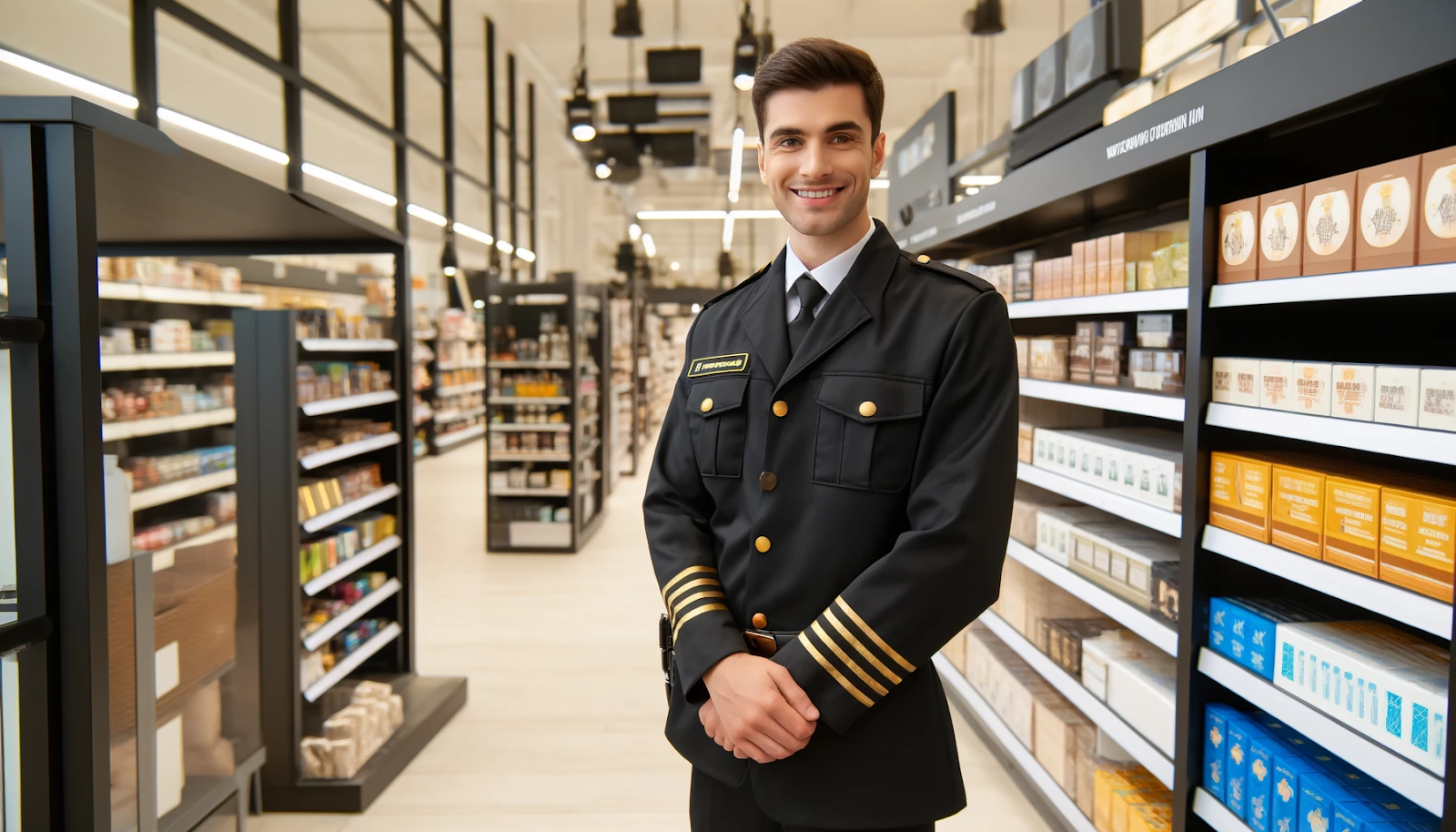Shoplifting is a persistent challenge that property managers, chief security officers, and security company hiring managers must address to maintain a safe and profitable environment. Effective strategies for preventing shoplifting and dealing with incidents when they occur can make a significant difference. This blog post provides practical tips and insights into how to handle shoplifting, from prevention to response.
Strategies for Preventing Shoplifting
Preventing shoplifting requires a multifaceted approach that involves both physical and psychological deterrents. Here are some effective strategies:
1. Store Layout and Design
- Clear Sight Lines: Arrange store layouts so employees can view the entire store clearly. Use low shelving and mirrors to eliminate blind spots.
- Strategic Placement of High-Value Items: Place high-value items in areas that are easily visible to staff, such as near the cash register or at the front of the store.
- Controlled Entry and Exit Points: Minimize the number of entry and exit points to reduce the risk of shoplifters slipping out unnoticed.
2. Staff Training
- Customer Service Excellence: Train staff to greet every customer warmly and offer assistance. Shoplifters are less likely to steal when they know they are being observed.
- Recognizing Suspicious Behavior: Educate employees on common shoplifting behaviors, such as loitering, avoiding eye contact, and carrying large bags.
- Regular Briefings: Conduct regular briefings to inform staff about shoplifting trends and tactics.
3. Technology and Security Systems
- Surveillance Cameras: Install high-quality surveillance cameras throughout the store, focusing on high-risk areas.
- Electronic Article Surveillance (EAS): Use EAS systems with tags and sensors to protect high-value items.
- Security Mirrors: Place convex security mirrors in strategic locations to increase visibility.
4. Store Policies
- Clear Signage: Display clear signage indicating that shoplifters will be prosecuted. This can act as a strong deterrent.
- Bag Checks: Implement a policy of checking large bags or backpacks at the entrance.
- Limited Access to Fitting Rooms: Monitor fitting rooms closely and limit the number of items customers can take in at one time.
Responding to Shoplifting Incidents
Even with the best prevention strategies, shoplifting incidents can still occur. How you respond to these incidents can impact your store's reputation and safety.
1. Staying Calm and Professional
- Do Not Confront Aggressively: Approach suspected shoplifters calmly and politely. Avoid physical confrontation.
- Use Non-Threatening Language: Politely ask the individual if they need help finding anything. This can alert them that they are being watched without direct accusation.
2. Gathering Evidence
- Document the Incident: Record details of the incident, including the date, time, description of the individual, and items taken.
- Surveillance Footage: Review and save relevant surveillance footage. This can be crucial for evidence.
3. Contacting Authorities
- Know Your Local Laws: Familiarize yourself with local laws regarding shoplifting and apprehension.
- Call the Police: If you have sufficient evidence, contact the police to report the theft. Provide them with all the documented details and footage.
4. Post-Incident Procedures
- Review Security Measures: After an incident, review your current security measures and identify any areas for improvement.
- Staff Debriefing: Conduct a debriefing session with your staff to discuss what happened and how similar incidents can be prevented in the future.
FAQs
What are the most common signs of a shoplifter?
Common signs include loitering without making a purchase, avoiding eye contact, carrying large bags, and frequently looking around to see if they are being watched.
How can I make my store less attractive to shoplifters?
Enhance visibility with strategic store layouts, use surveillance cameras, train staff in excellent customer service, and display clear signage about your shoplifting policies.
What should I do if I catch someone shoplifting?
Stay calm, use non-threatening language, document the incident, and contact the authorities if you have sufficient evidence.
How can technology help prevent shoplifting?
Technology such as surveillance cameras, EAS systems, and security mirrors can deter shoplifters and provide valuable evidence in case of an incident.
By implementing these strategies, property managers, chief security officers, and security company hiring managers can create a safer environment, deter potential shoplifters, and effectively respond to incidents when they occur.
.png)
.png)
.png)

.png)
.png)

.png)
.png)
.png)
.png)
